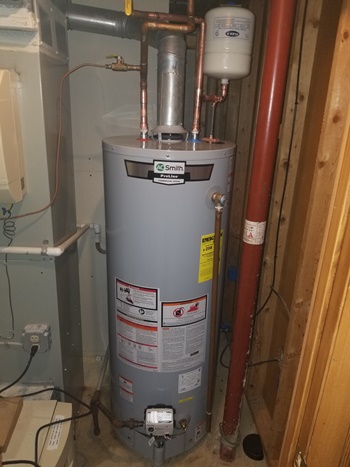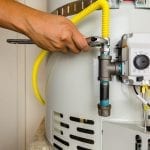The author is making a number of great observations about How to Maintain Your Water Heater & Prolong its Life overall in the content following next.

Hot water is crucial for daily convenience, whether it's for a rejuvenating shower or washing recipes. To ensure your warm water system runs effectively and lasts longer, normal maintenance is key. This post offers sensible ideas and insights on just how to preserve your home's hot water system to avoid disruptions and pricey repair work.
Intro
Maintaining your home's hot water system could seem daunting, however with a couple of easy actions, you can ensure it runs smoothly for several years to find. This overview covers everything from comprehending your hot water system to DIY upkeep suggestions and recognizing when to contact specialist assistance.
Relevance of Maintaining Your Warm Water System
Regular maintenance not just expands the lifespan of your hot water system however additionally guarantees it operates effectively. Neglecting maintenance can bring about decreased effectiveness, greater energy costs, and even premature failure of the system.
Indicators Your Hot Water System Requirements Upkeep
Recognizing when your hot water system needs interest can avoid significant issues. Keep an eye out for indications such as irregular water temperature, strange noises from the heating system, or rusty water.
Flushing the Hot Water Heater
Purging your water heater eliminates debris accumulation, boosting performance and prolonging its life.
Checking and Changing Anode Rods
Anode poles prevent rust inside the storage tank. Inspecting and replacing them when worn is critical.
Facility Concerns Requiring Professional Help
Examples consist of major leaks, electric problems, or if your water heater is constantly underperforming.
Regular Specialist Upkeep Conveniences
Specialist upkeep can consist of thorough evaluations, tune-ups, and ensuring compliance with safety standards.
Evaluating and Adjusting Temperature Settings
Changing the temperature settings ensures optimal performance and safety.
Do It Yourself Tips for Upkeep
You can do a number of upkeep tasks yourself to keep your warm water system in leading condition.
Checking for Leaks
Routinely evaluate pipelines and connections for leaks, as these can lead to water damage and greater costs.
Recognizing Your Hot Water System
Before diving into upkeep jobs, it's handy to recognize the standard parts of your warm water system. Commonly, this consists of the water heater itself, pipelines, anode poles, and temperature level controls.
Regular Monthly Maintenance Tasks
Regular monthly checks can assist catch minor issues prior to they intensify.
Evaluating Pressure Alleviation Valves
Evaluating the stress relief valve guarantees it works properly and avoids excessive pressure buildup.
Shielding Pipelines
Protecting hot water pipelines minimizes warm loss and can save power.
When to Call a Professional
While DIY upkeep is useful, some concerns call for specialist competence.
Conclusion
Normal maintenance of your home's hot water system is necessary for efficiency, long life, and expense savings. By adhering to these tips and recognizing when to seek specialist aid, you can make sure a reputable supply of warm water without unforeseen disturbances.
Water Heater Maintenance: The Basics
Maintaining your water heater will ensure it operates efficiently and has a longer lifespan. Neglecting regular maintenance can lead to costly repairs and an even bigger chunk of your savings if you have to replace it sooner than necessary. But there’s good news: Most water heater maintenance tasks are relatively simple and easy for homeowners with basic DIY skills.
Flush the Water Heater
Over time, sediment and minerals can build up in the tank, reducing its efficiency and potentially causing damage. To flush the tank, turn off the power or gas supply, attach a hose to the drain valve near the bottom and open the valve to drain the water until it runs clear. Ideally, flush the tank annually.
Replace the Anode Rod
The anode rod is a sacrificial metal rod that helps prevent corrosion inside the tank. Inspect and replace it every three to five years or per the manufacturer's recommendation. To replace the anode rod, turn off the power or gas supply, drain a few gallons of water from the tank, unscrew the old rod and replace it with a new one. If the anode rod is significantly corroded or covered in calcium buildup, it's a sign the water heater may need to be replaced soon.
Tune-Up
A yearly tune-up can help identify potential issues and ensure your water heater operates at peak efficiency. This typically involves checking the thermostat, burner assembly (for gas heaters) and any other components specified by the manufacturer. During a tune-up, the technician may also clean the burner and adjust the pilot light (for gas heaters) or examine the heating elements (for electric heaters).
How to Maintain Your Water Heater
Insulate the tank. Insulating the tank can improve energy efficiency and reduce heat loss, saving you money on energy bills. You can purchase precut insulation blankets designed specifically for water heaters or use standard fiberglass insulation wrapped securely around the tank. Check the temperature. The recommended water temperature for most households is around 120 degrees Fahrenheit (49 degrees Celsius). Higher temperatures can increase energy costs and potentially cause scalding. Use a kitchen thermometer to check the temperature at the faucet nearest the water heater. Monitor water pressure. Excessive water pressure can strain the water heater and cause leaks or even tank failure. Install a pressure-reducing valve if necessary. The ideal water pressure range is between 60 and 70 PSI (pounds per square inch). Test the temperature and pressure (T&P) relief valve. The T&P relief valve is a safety feature that releases pressure if the tank gets too hot or the pressure builds up too high. Test it annually by lifting the lever and allowing a small amount of water to release. Replace the valve if it doesn't release water or reseal properly. Check for leaks. Regularly inspect the tank, pipes and fittings for leaks or corrosion. Deal with issues promptly to prevent further damage. Even a small leak can lead to significant water damage over time. Consider a tankless water heater. If your traditional tank-style water heater is nearing the end of its lifespan ( typically 10 years), consider replacing it with a tankless water heater. These units heat water on demand, reducing standby energy losses and potentially saving you money on your energy bills. Schedule professional maintenance. While homeowners can perform many water heater maintenance tasks, it's still a good idea to schedule professional maintenance every few years. A plumber or HVAC technician can thoroughly inspect the unit, identify potential issues and ensure it operates safely and efficiently. https://www.homeserve.com/en-us/blog/home-improvement/hot-water-heater-maintanence/

I stumbled upon that blog post about How to Maintain a Hot Water Heater in a Few Simple Steps while doing research the web. Are you aware of another person who is excited by How to Maintain a Hot Water Heater in a Few Simple Steps? Be sure share it. We truly appreciate your readership.
Visit My Site